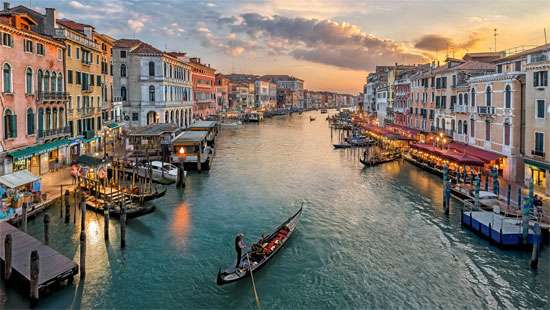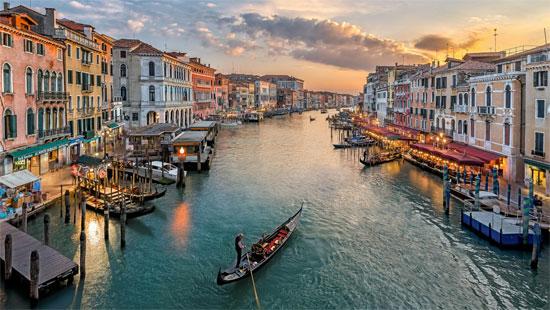Reply To:
Name - Reply Comment

 Venice, Italy (CNN) — April 25 has long been a historic day in Venice – the date is not just Italy’s Liberation day, but it’s also the feast day of the city’s patron saint, St. Mark.
Venice, Italy (CNN) — April 25 has long been a historic day in Venice – the date is not just Italy’s Liberation day, but it’s also the feast day of the city’s patron saint, St. Mark.
But now Venice will notch up another dose of history for April 25 – as the day the city becomes the first in the world to charge day-trippers an entry fee.
There were protests as the day got underway with locals waving banners and holding up their passports in anger at the city being put behind a barrier in the style of a theme park or museum. Photos show police clashing with some protesters.
The long-awaited contributo di accesso (it’s styled as an ‘access contribution’ rather than a ticket) started at 8.a.m. on Thursday. The city council is running a pilot project until mid July to see if it can make the system work.
Anybody visiting Venice as a tourist for the day – except those who live in the local Veneto region – must pay the 5 euro ($5.40) charge if they arrive between 8 a.m. and 4 p.m..
Tourists staying overnight don’t have to pay, as an overnight tax is already added to their accommodation bills. However they too will have to register their presence to request an exemption to the fee. Essentially, anyone entering the city on dates the fee is charged must carry either a ticket or an exemption. The only exceptions are residents of Venice and people who were born there.
Hundreds of locals participated in a protest at Piazzale Roma, the entry point by road to the city, though the exact number was disputed. Protestors say that at its largest the group was 1,000 strong, while the authorities said that only 300 attended.
A smaller protest took place near the main train station with Venetians confronting the mayor who was giving interviews to various television crews. That protest ended up in an embrace with the mayor, according to news reports which captured the confrontation.
Ruggero Tallon, one of the main protest organizers and the spokesperson for anti-cruise ship campaign group No Grandi Navi, told CNN that the group had planned to erect a banner spelling out “Welcome to Veniceland” and hand out fake “tickets” to passersby, but were stopped by police. Instead they marched to Campo Santa Margherita, one of the city’s main squares.
“We rose up against the mayor’s idea of a closed city, a museum city,” Tallon told CNN.
“A ticket does nothing. It doesn’t stop the monoculture of tourism. It doesn’t ease the pressure on Venice. It’s a medieval tax and it’s against freedom of movement.”
He expressed concern that the project is being managed by a private company, which will receive people’s data, and suggested that other moves by the authorities – including angling for the return of cruise ships to the lagoon, and not yet restricting Airbnbs – are adding to the problem.
“With the one hand they are doing this, with the other they are doing everything to increase the number of tourists,” said Tallon, who called mass tourism a “global problem.”
“The only way [forward] is to repopulate the city – we have 49,000 inhabitants and there are more beds for tourists than residents,” he said. “Let’s try to make it possible for people to live here. Every house that’s lived in is a house taken away from tourism.”
Elena Gastaldello, president of Arci (Italian recreational and cultural association) of Veneto, who took part in the protest, said that the entrance fee will not control numbers.
“The ticket will not impose limits on tourist access to Venice as no maximum number of visitors has been established, but it will further transform the city into an amusement park,” she told CNN by phone.
“This measure is not accompanied by concrete policies for urban development, rent containment and ease of finding housing. It solves no problems.”
A spokesperson for the mayor’s office told CNN that 113,000 visitors registered for the first day, with about 80,000 doing so in advance. Of that number, 15,700 – a little over 10% – paid the fee.
Of the exemptions, almost 40,000 were hotel guests, and around 4,000 were friends or family of residents. Over 20,000 commuters and 13,000 students entered the city. School groups were also counted.
The council said that they inspected the credentials of nearly 14,000 people.